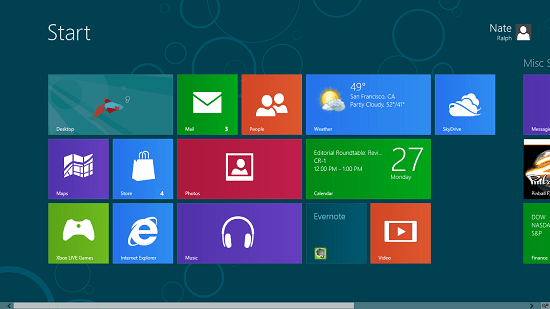SAN FRANCISCO – Microsoft CEO Steve Ballmer revealed today at the Build conference what was the worst kept secret in the IT industry: the Start button is making a comeback on Windows 8.1.
But the Start button is going to be a key factor in Windows on-going relevance in the marketplace.
One of the challenges facing Microsoft is that there is a large installed base of Windows XP and 7 customers who refuse to switch to Windows 8 and the new touch environment. According to Microsoft sources, there are more than 100 million install base that have PC that are stretched passed three to five years. Microsoft plans to kill off support of XP in April of 2014.
Rob Sanfilippo, research vice president of Directions on Microsoft,based in Kirkland, Wash., told CDN that the “refined blend” strategy was a response to feedback form Windows 8 users.
“It’s good to see a new release so quickly and the return of the Start button. It was also not a jarring move from the modern user interface to the desktop user interface. They referred to it as a new experience instead of jarring, but is still two different worlds of user interfaces,” he said.
Sanfiilippo added the Windows touch market adoption will be its biggest challenge. “Most Windows users are desktop or notebook users and there are a lot of them out there; over a billion. Touch has been driven by new devices from Apple and Android. Bringing Windows users to that world will take time and they can’t do it in one release,” he said.
Ballmer said that Microsoft is in transformation mode and he made note of the time that has elapsed between the release of Windows 8 and 8.1 – seven months. “This is a rapid release cycle,” he said. “The transformation we are going through as a software company into a company that builds software powered devices and services. At the pinnacle of this transformation will be rapid releases. This is not a one-time thing. Think of it as the new norm of everything we do.”
He added to expect rapid releases of Office 360 and services such as its Azure cloud and SkyDrive.
The Windows App Store has now reached the 100,000 apps mark. But key to Ballmer’s strategy is the millions of apps that people currently use on Windows desktops. These apps are not available on the Windows App Store, but the work on Windows 8.1, he said.
Ballmer called this strategy “refining the blend” as they continue to push forward with Windows 8 and touch it will be important to support older apps as they move or migrate to the new touch-enabled devices.
“This is why we will bring back the Start button to the desktop and you’ll be able to boot to the desktop. It’s a more refined blend of new Windows with old Windows,” he said.
Ballmer also made mention of how important the smaller form factors for tablets will be to Windows 8.1’s success in the market. The told the Build conference of more than 6,000 attendees that the market will see a proliferation of small Windows tablets or as the market calls them Phablets.
Microsoft had to do some work on the back end to unlock Windows for these new smaller form factors and channel partners and developers will now be able to work in terms of system design for Windows 8.1 on smaller tablets.
“The Windows device of today does not look like the PC of five, 10 or 15 years ago. In a short seven months Microsoft has turned on the switch for new hardware products and innovation with a range of devices with Windows inside,” Ballmer said.
Another form factor Ballmer is bullish on is the hybrid or 2-in-1 device such as the Lenovo Helix and the Samsung ATIV Q. “I go to meetings and people are bringing in a tablet but still take notes on pen and paper. This new category of 2-in-1 is something people want,” he said.






Not really a 7 month cycle between 8 and 8.1. 8.1 won’t be out until the fall [I’m guessing late October] which was the time when Win 8 was released to the public. Win 8 was in beta or RC this time last year ands was RTM in August. [So Ballmer is wrong again.]